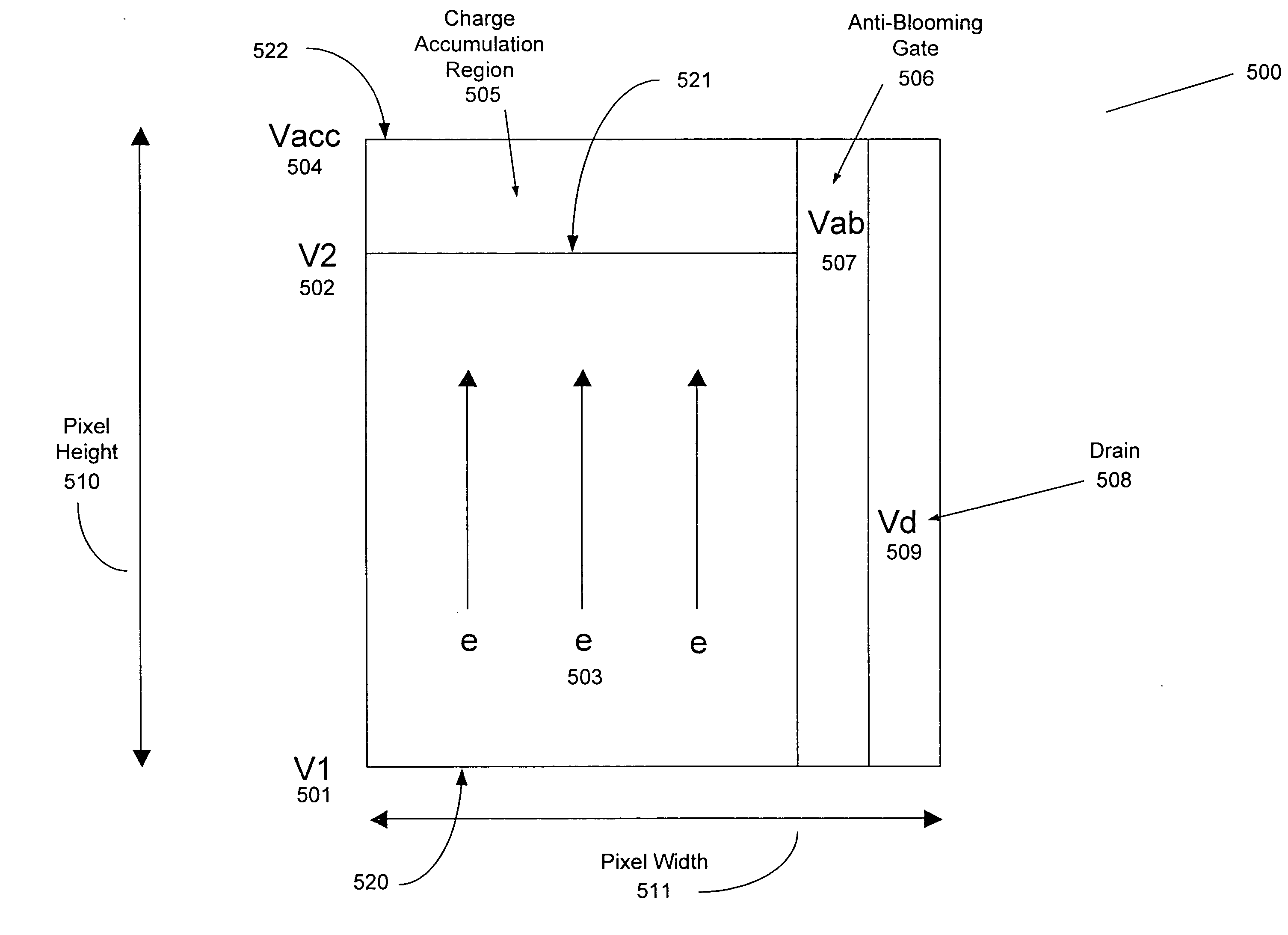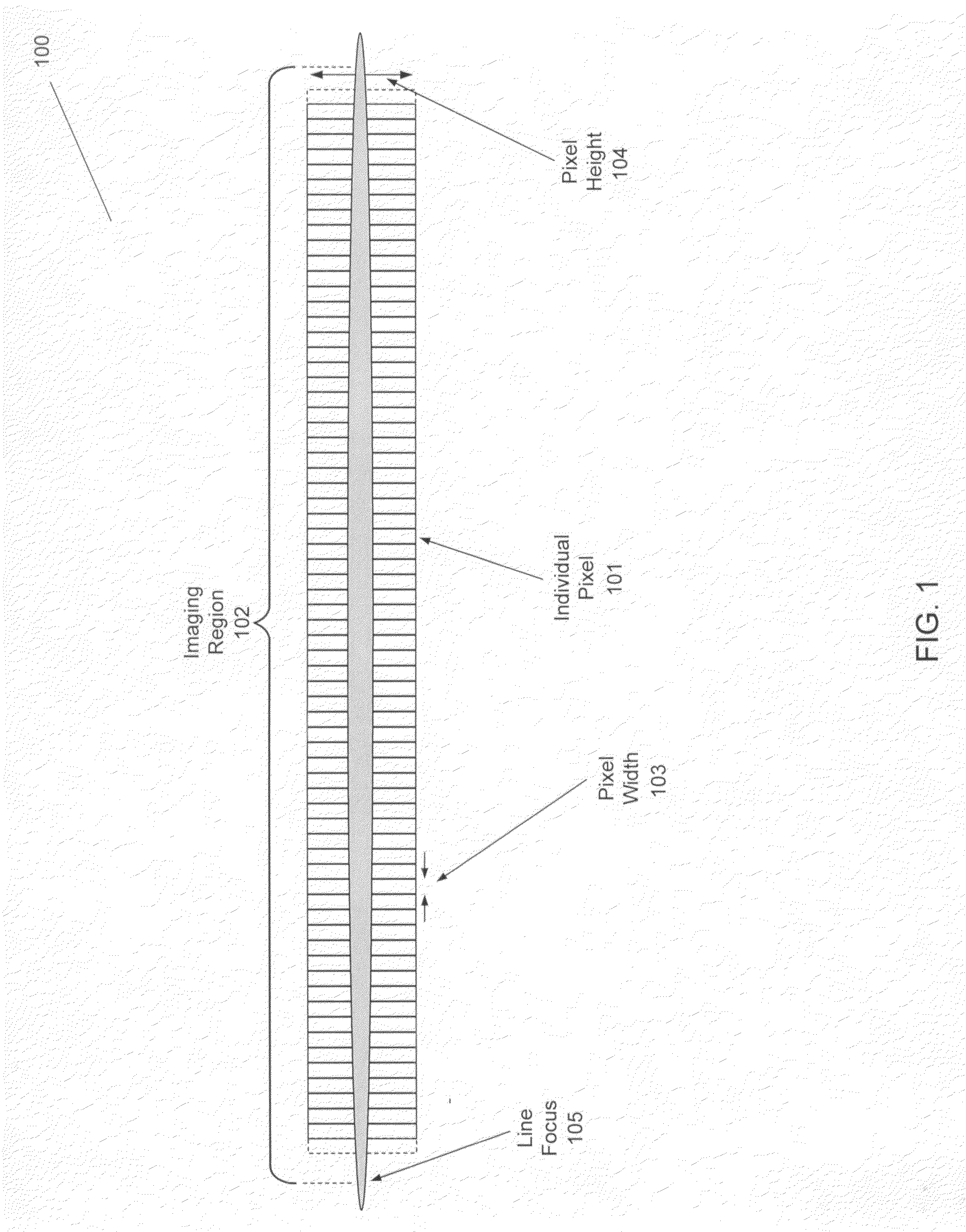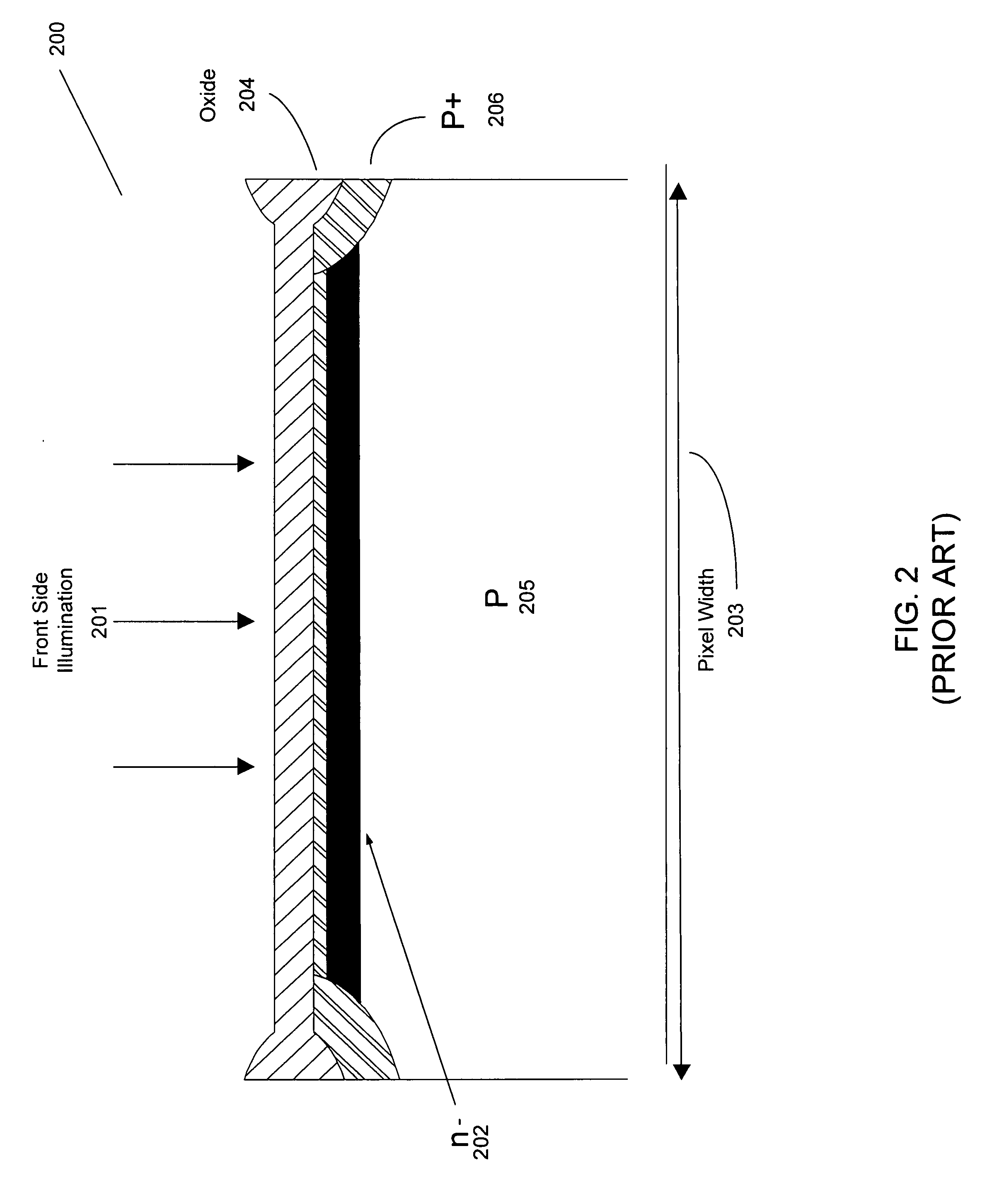Inspection system using back side illuminated linear sensor
a linear sensor and inspection system technology, applied in the field of optical imaging, can solve the problems of not being able to achieve full optimization, devices can also be susceptible to long-term ultra-violet and deep ultra-violet light damage, and techniques and performance compromises have been attempted, so as to achieve manageable power dissipation
- Summary
- Abstract
- Description
- Claims
- Application Information
AI Technical Summary
Benefits of technology
Problems solved by technology
Method used
Image
Examples
Embodiment Construction
[0024]According to the present invention, there is provided an inspection system comprising a back side illuminated linear sensing arrangement that employs one or more gates over the exposure region to facilitate control of the voltage profile across the exposed area. The design orients each pixel and configures the sensing device such that light energy reflected from a specimen is received at a back-side of the sensing device and is collected in a pixel potential well near the front side of the device. Applying a plurality of constant voltages in stair-step fashion across regions of each pixel then causes electrons to advance or drift within each pixel toward an accumulation region or zone. Advancing is enhanced by transverse electric fields from the applied gate voltages.
[0025]The design is particularly applicable to inspection and metrology systems. The implementation is either a single gate implementation or multiple gate implementation producing in either case a continuous volt...
PUM
| Property | Measurement | Unit |
|---|---|---|
| oblique incidence angle | aaaaa | aaaaa |
| light energy | aaaaa | aaaaa |
| voltage | aaaaa | aaaaa |
Abstract
Description
Claims
Application Information
 Login to View More
Login to View More - R&D
- Intellectual Property
- Life Sciences
- Materials
- Tech Scout
- Unparalleled Data Quality
- Higher Quality Content
- 60% Fewer Hallucinations
Browse by: Latest US Patents, China's latest patents, Technical Efficacy Thesaurus, Application Domain, Technology Topic, Popular Technical Reports.
© 2025 PatSnap. All rights reserved.Legal|Privacy policy|Modern Slavery Act Transparency Statement|Sitemap|About US| Contact US: help@patsnap.com



